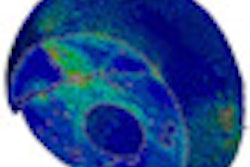Dear Imaging & CAD/CAM Insider,
The Spectra optical caries detection device is a useful adjunct for detecting, assessing, and monitoring enamel demineralization and caries progression, according to the product's first published clinical study in the Journal of Clinical Dentistry.
Introduced in 2009, the Spectra uses a blue light-emitting diode operating at 405 nanometers to identify caries-causing bacteria on individual teeth. Read more about how this device is able to image the entire spectrum of caries severity, from enamel demineralization to dentin decay, in our latest Imaging & CAD/CAM Insider Exclusive.
In other Imaging & CAD/CAM Community news, magnetic resonance imaging can provide more detailed visualization of anatomical structures and variations prior to oral surgery, reducing the risk of surgical complications and exposure to ionizing radiation, according to a new study in the Journal of Computer Assisted Tomography.
And a two-year European Union project has yielded several advances in modeling software intended to enhance CT imaging, including a software prototype that allows a dentist to perform patient-specific simulations of a dental implant. Read more.
On the clinical research front, leaded glasses and thyroid collars can effectively reduce patient exposure to radiation during cone-beam CT imaging without disrupting diagnostic image quality at the tooth-bearing areas of the jaws, according to two studies presented at the American Academy of Oral and Maxillofacial Radiology annual meeting in Chicago.
In related research, the Nomad handheld intraoral x-ray device poses no radiation exposure risk to users or patients, a study in Health Physics concluded. Other handheld x-ray systems may not be as safe, however, the authors contend.
And radiation dose can influence the development of apical periodontitis in patients undergoing radiotherapy for cancer, according to a study in Clinical Oral Investigations.
Finally, legislation being developed by a U.S. senator seeks to address the access-to-care issue by making it easier to practice medicine across state lines. Click here to read more about the proposed bill, which would apply to those wanting to provide teleradiology and telemedicine services in states other than where they are licensed.



















